So I am making an app and need AWS API Gateway. I want to use HTTP API instead of REST API. My code looks like this
package main
import (
"database/sql"
"fmt"
"strings"
"github.com/aws/aws-lambda-go/lambda"
_ "github.com/lib/pq"
)
here I make a connection to the database
func fetch(inte string, input string) string {
if err != nil {
panic(err)
}
switch inte {
case "00":
{
res = append(res, response)
}
switch len(res) {
case 0:
return "401"
}
case "01":
}
switch len(res) {
case 0:
return "402"
}
}
return "404"
}
type LambdaEvent struct {
Req string `json:"req"`
Num string `json:"num"`
}
type LambdaResponse struct {
Res string `json:"res"`
}
func LambdaHandler(event LambdaEvent) (LambdaResponse, error) {
res := fetch(event.Num, event.Req)
return LambdaResponse{
Res: res,
}, nil
}
func main() {
lambda.Start(LambdaHandler)
}
So as you see this is not the full code. I make a connection to the database and and work with the requests string query. so I tried the same with http api but it just gives me the 404 meaning the http api doesn't pass the query string to the lambda so how do I make my api pass the data to the lambda. Rest api works HTTP doesn't. Thanks for any help.
